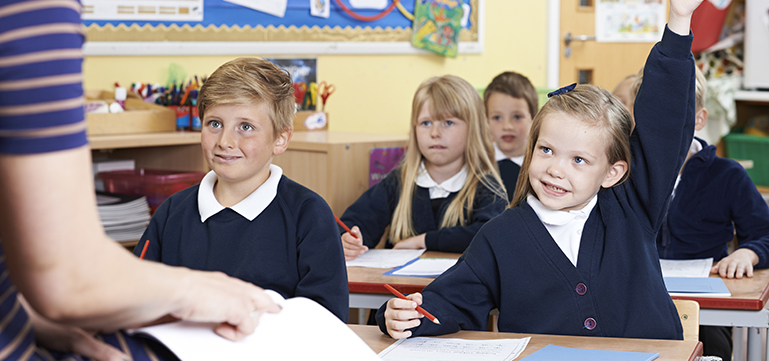Raising Welsh language standards

Quick links:
Information about the school
Woodlands Primary School is in Upper Cwmbran in Torfaen. There are 342 pupils on roll. This includes 41 part-time pupils in the school’s nursery class. The school organises pupils into a learning base for pupils with complex needs, and 11 classes, five mixed age and six single age. Health visitors are based in the school and there is an Integrated Children’s Centre on site.
The three year average for pupils eligible for free school meals is around 28%. This figure is above the Welsh average of 18%. Nearly all pupils come from homes where English is the first language. The school has identified approximately 21% of pupils with special educational needs. This is equivalent to the Welsh national average of 21%.
Context and background to the effective or innovative practice
Woodlands Community Primary School has had an established ‘‘Criw Cymraeg’’ for many years. When the opportunity arose for the school to work towards achieving the Siarter Iaith Cymraeg Campus Bronze Award, the ‘‘Criw Cymraeg’’ displayed a great deal of enthusiasm and were happy to share responsibility for implementing new ideas in order to raise the profile of Welsh. Pupils and staff viewed this as an exciting way to raise standards in Welsh second language teaching and learning.
Description of nature of strategy or activity
The ‘Criw Cymraeg’ began their journey by meeting with all stakeholders to share the Siarter Iaith objective with them. This involved holding an assembly for pupils and staff, and meeting with breakfast club staff, midday supervisors and the link governor for Welsh. They created an informative leaflet to send out to parents.
All key stage 2, pupils completed a baseline questionnaire, allowing the ‘Criw Cymraeg’ to audit current views and practice. After collating the results of the questionnaire and the audit, ‘Criw Cymraeg’ worked collaboratively to devise their own action plan in order to help them achieve the ten Bronze Award targets within the Siarter Iaith. They designed their own board to display progress, ensuring that the whole school community were kept informed. Pupils were given responsibility for gathering and recording evidence to support each of the ten targets. They participated in regular learning walks, listening to other learners, and were involved in lesson observations during which they would provide feedback to other pupils.
‘Criw Cymraeg’ introduced new initiatives such as the ‘Sgriblo Sydyn’ board, Welsh Diary homework and language workshops for parents. The ‘Helpwr Heddiw’ welcomed pupils into every assembly and Welsh was used regularly by pupils and staff during the breakfast club, the fruit Tuck shop at breaktimes and during playground games on the school yard at lunchtimes. Welsh reading was introduced into the library club, providing older pupils with an opportunity to read Welsh texts to younger pupils. Amendments were also made to the school’s Welsh guided reading arrangements. One week per half-term was dedicated to Welsh guided reading instead of shorter weekly sessions, and specific teaching packs were used to ensure that pupils were having regular opportunities for reading in Welsh.
Strong links were made with a Welsh-medium primary school. Pupils enjoyed using their oracy skills during webcam conversations and developing their writing skills during poetry workshops and a writing project, requiring pupils to email in Welsh. With the help of bilingual storytellers and composers, key stage 2 pupils wrote and performed their own bilingual opera based on The Mabinogion. ‘Criw Cymraeg’ were interviewed by the school newsletter club to ensure that parents were regularly informed of their progress. After successfully achieving all ten targets, pupils were awarded the Siarter Iaith Cymraeg Campus Bronze Award.
What impact has this work had on provision and learners’ standards?
The school notes that there has been a measurable improvement in pupils’ Welsh oracy, reading and writing skills. Standards in Welsh overall have improved and the school has outperformed all comparators at both level 4 and level 5. Levels of confidence of staff and pupils have greatly improved and the use of Welsh across all curriculum areas has become fully embedded.
How have you shared your good practice?
The school is a lead school for Welsh. ‘Criw Cymraeg’ presented at the ‘Bilingualism at its Best’ conference.